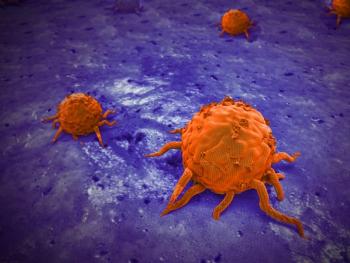
Commentary on Abstract #2268
Ventura and Roberts (abstract #2268) made an interesting observation of a disease response in a patient with angiosarcoma. This patient initially received radiation to a large mass in the neck and had a minor response-less than 10% shrinkage of the
Ventura and Roberts (abstract #2268) made an interesting observation of a disease response in a patient with angiosarcoma. This patient initially received radiation to a large mass in the neck and had a minor response-less than 10% shrinkage of the mass. Two months later, the disease progressed and oral thalidomide (Thalomid) was started at 150 mg three times daily. The neck mass had decreased from 7.5 ´ 5 cm to 3 ´ 2 cm, and thalidomide was decreased to 100 mg three times daily because of somnolence. Thalidomide was discontinued after 2 months because of disease progression in other metastatic sites. However, the neck mass remained unchanged up until the patient’s demise 3 months later. The authors postulate that thalidomide may have synergistic antitumor activity when combined with radiation therapy.
Angiosarcoma arises from blood (hemangiosarcoma) or lymphatic vessels (lymphangiosarcoma). These are almost uniformly high-grade lesions and extremely aggressive tumors. Treatment includes chemotherapy and local radiotherapy, although these therapies generally have a limited effect on the disease. The direct antiangiogenic activity of thalidomide might provide synergistic or additive antitumor activity to radiation-treated angiosarcoma. As shown in this case, tumors that were not previously treated with radiation did not shrink, but were stable for 2 months. Nevertheless, thalidomide and radiotherapy have different mechanisms of action and nonoverlapping toxicity. Pilot trials testing the potential synergistic or additive antitumor activity of thalidomide in combination with radiotherapy in tumors with endothelial-cell proliferation are warranted.
Newsletter
Stay up to date on recent advances in the multidisciplinary approach to cancer.


















































































